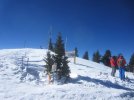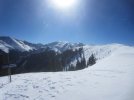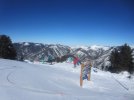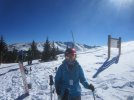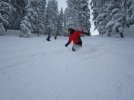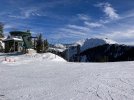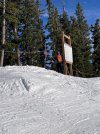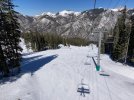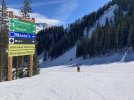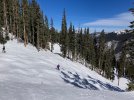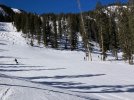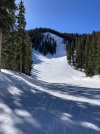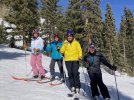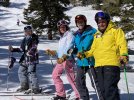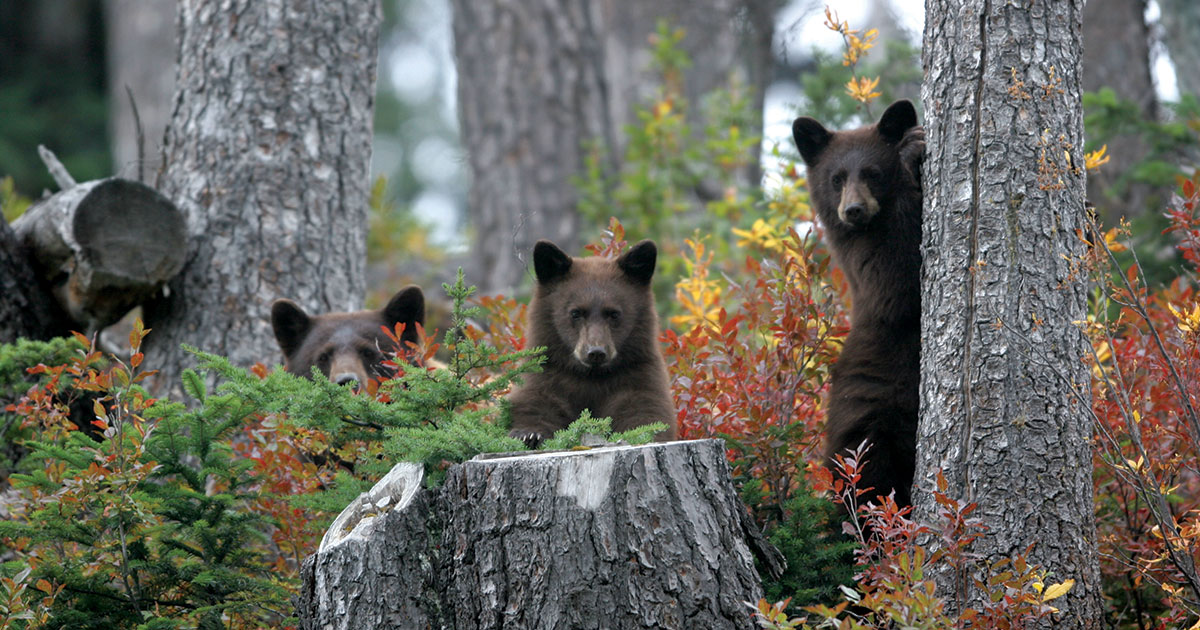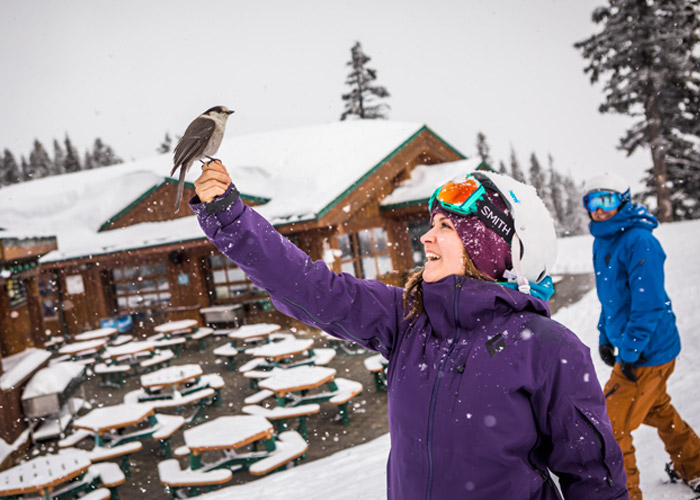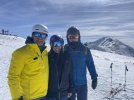This was my second Private Ski Week with
Derek Gordon, following up
one a year ago. What my ski buddies have in common besides being around age 65 is that we are more interested in working on bump technique than spending time hiking the Ridge or skiing off the Kachina Lift during a morning lesson. That said, we are all up for exploring black and double-black terrain in the afternoons when there is good company and decent snow. Derek is well over 70 and has been teaching at TSV for over 40 years. He's both serious about teaching and a lot of fun.
We mostly worked on groomers, blue and black bumps. We did Upper Hunziker's on Day 2 and did it a few more times later in the week. It had some of the best snow on the back side. By the end of the week, we'd worked on several black trails on the front side (Tell Glade, Blitz, Inferno, Psycho Path, Poco Gusto) plus Lorelie and Longhorn (long double-black). While we went down Zagava (black) more than once to get from Bambi to Porcupine, it was an exercise in survival more than anything else. Parts of Zagava were pretty slick, as usually happens because of the steep pitch and sun exposure. Didn't help that there were still a few exposed rocks.
Learned an amazing amount about going "3 miles an hour" on steep bumps. Hoping to have the same group again next season.
Lorelie (black) with Derek
@DebbieSue (white), Jason (blue), Margaret (black), MarzNC (black jacket, grey pants)
View attachment 20464View attachment 20465View attachment 20466



